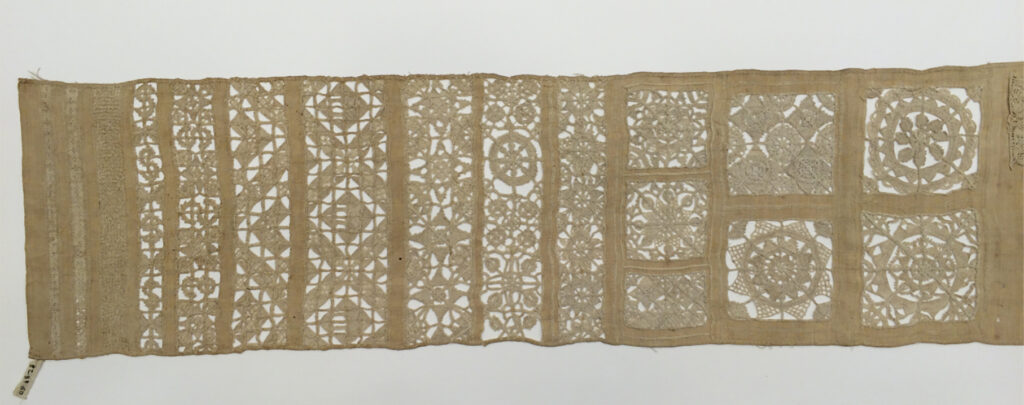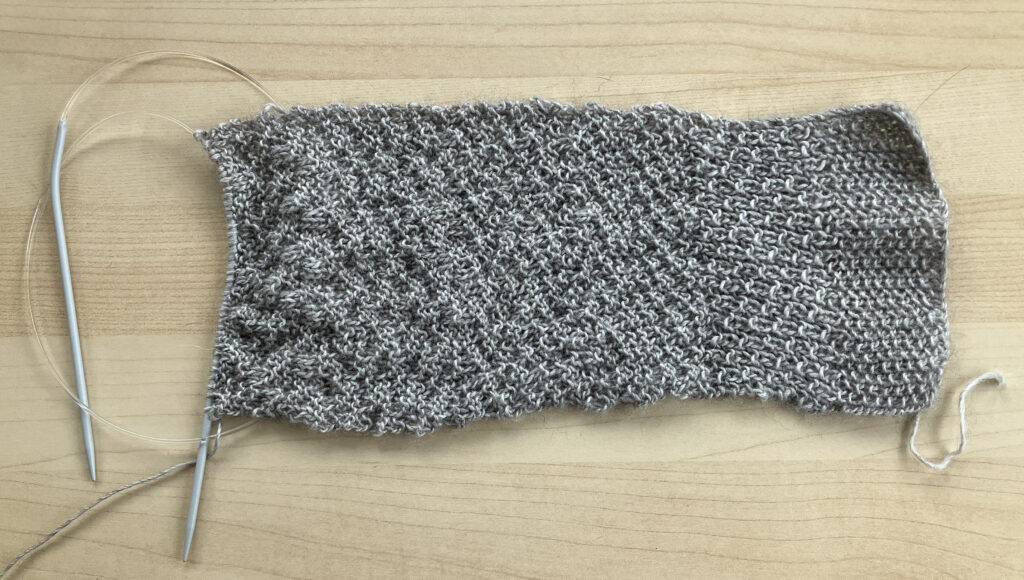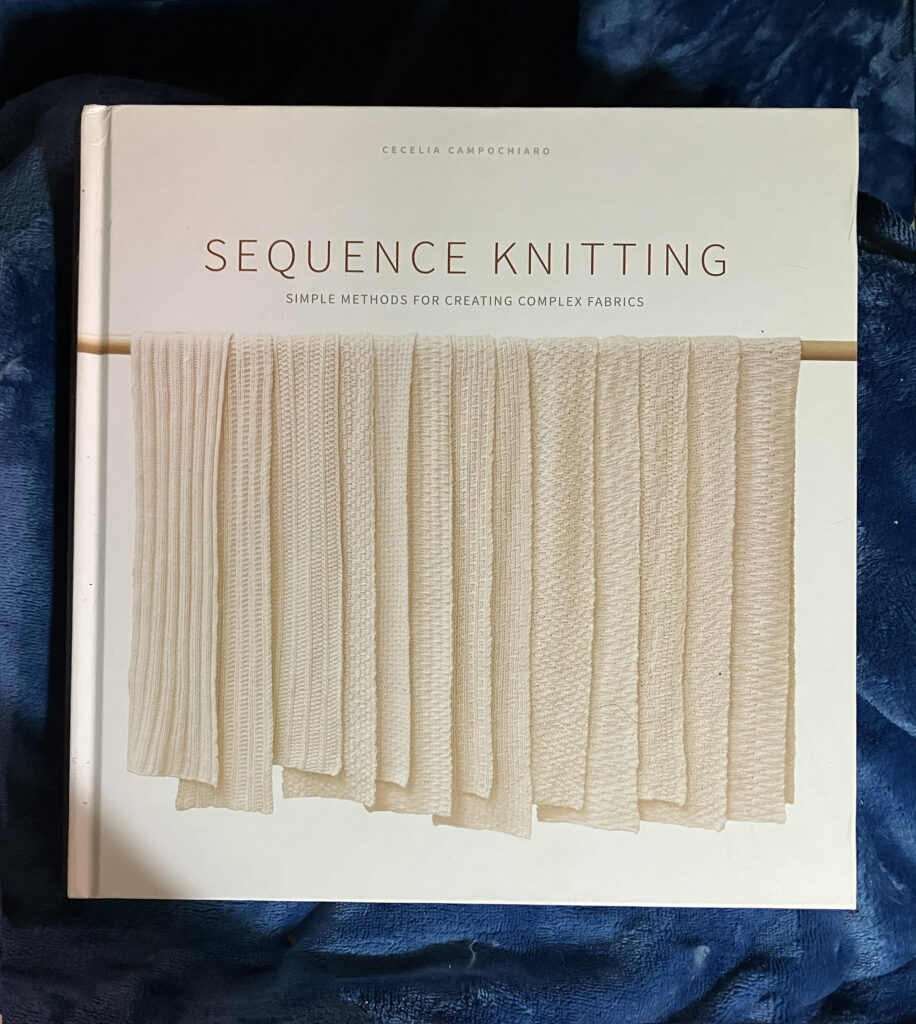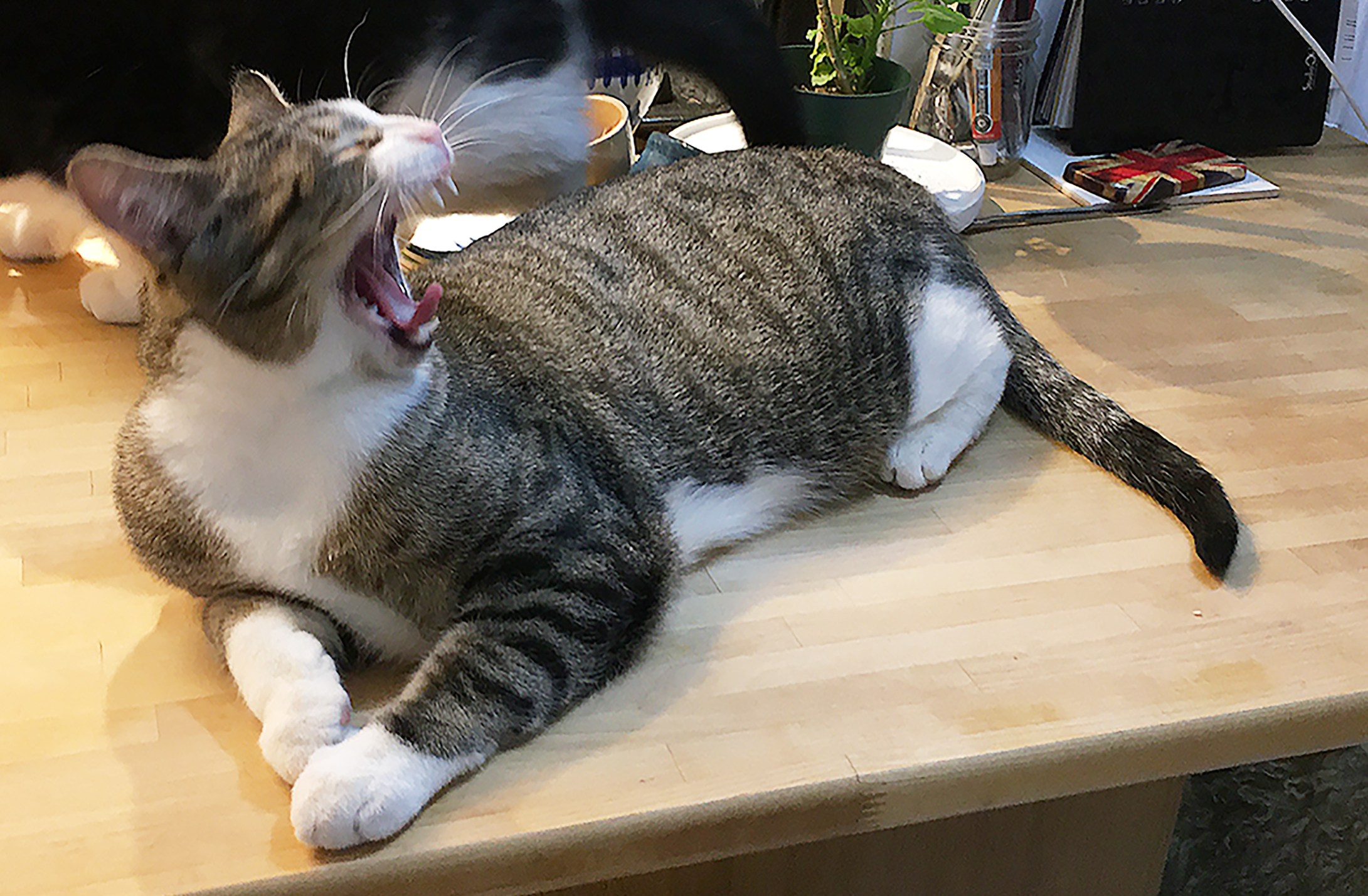Sequences, a project with three parents – a new book, change ringing, and Elizabethan samplers
I got this fascinating book last fall, just before we moved. It shows how to make an amazing array of textures and patterns with a weird mix of super-simple knit patterns and math. Or, in knitters’ terms, it uses short sequences of knit and purl stitches, repeated over and over and over and over – on at least one more stitch than multiples of the length of the sequence.
Which brings in the change ringing – recently I had a chance to participate in a demonstration of change ringing with hand bells at a Society for Creative Anachronism event. Change ringing is also pattern-making with short sequences. Instead of stitches, it uses tones, and repeats by starting each round at a different place in the sequence.
The other element is the Elizabethan whitework sampler, like this one in the Metropolitan Museum of Art – long&narrow, many patterns, one colour. Again, making a series of patterns with repeats of short sequences – this time stitches again, though thread through fabric rather than loops of yarn.

Weirdly, when I googled on “mathematics repeat “short sequences”” looking to see if there’s a name in mathematics for this kind of pattern making, it brought up pages&pages of information on short sequence repeats (SSRs) in DNA replication! Which is intriguing, and a little startling.
But, for now, I’m going to stay out of the DNA rabbit hole, and stick to repeating short sequences in a lovely pale grey merino/silk/yak yarn.
Here’s the first few:

- the whitework sampler in the Metropolitan Museum of Art: https://www.metmuseum.org/art/collection/search/217955 ↩︎



